Tag: Qwuloolt Estuary Restoration Project
Larsen Announces Funding for Skagit Valley Flood Study and Qwuloolt Estuary Restoration
Qwuloolt restoration in its final phase
By Monica Brown Tulalip News Writer
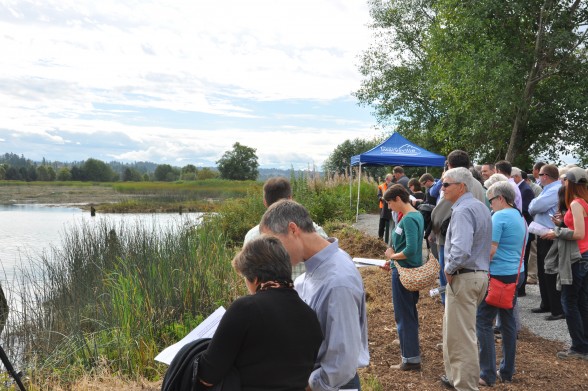
Tulalip, Wash. –
Restoring 400 acres of estuary land is not a mediocre task and has required years of dedication from many groups. The complexity of the restoration project has spanned fourteen years and is nearing completion. With just over a year left in the project the, the final stage is to lower the southern levee and remove the tide gate.
The tide gate and levee drain the fresh water from the land and prevent any water from flowing back into the estuary. With the completion this winter of the setback levee on the western side, the southern levee, which runs along the northern edge of Ebey Slough, will be breached and the tide gate removed allowing the saline and fresh water to mix.
The Tulalip Tribes, along with the City of Marysville, Army Corps of Engineers, National Oceanic and Atmospheric Administration, U.S. Fish and Wildlife, Washington State Department of Ecology, and the Natural Resources Conservation Service have collaborated on this project and representatives were invited along with local and state politicians to view the progress that has been made.
Visitors were led into the estuary and taken on a brief walk to view the channel opening. Afterwards they were invited to the Hibulb Cultural Center for lunch and a discussion the estuary project in its final stage.
The restoration’s completion is expected to increase the salmon and migratory bird population and bolster the native vegetation in the area.
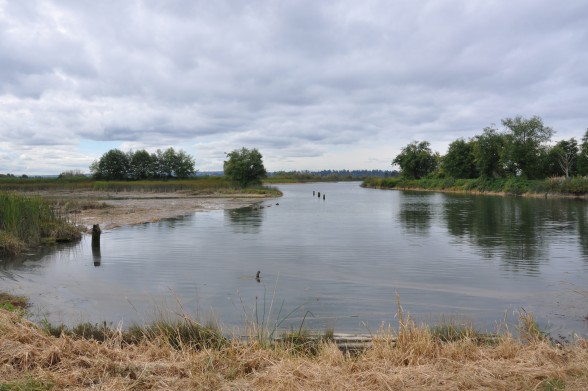
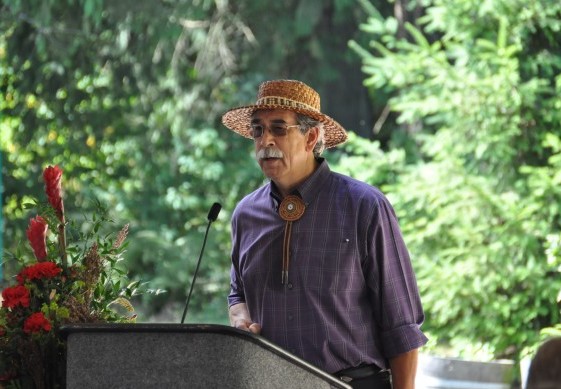
Earth Day celebration at the Qwuloolt Estuary
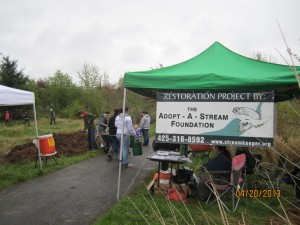
Article by Monica Brown
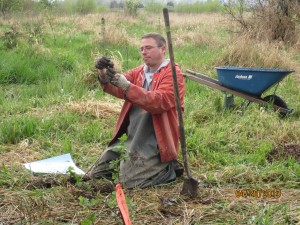
Photo by Monica Brown
TULALIP, Wash. – Community members chose to celebrate Earth Day on April 20th, by helping plant native trees and shrubs in the Qwuloolt Estuary located on the South end of Marysville. The Adopt a Stream Foundation (AASF) is guiding this portion of the project by planting the native trees and shrubs which have been made possible by a grant from the Washington State Department of Ecology through a $250,000 Allen Creek Grant. The main focus of the grant is to work with and inform nearby homeowners that live near the Allen Creek watershed about the restoration project. Walter Rung, Ecologist from the AASF says “We are going to door to door and talking to them about ways to help improve water quality in the creeks.”
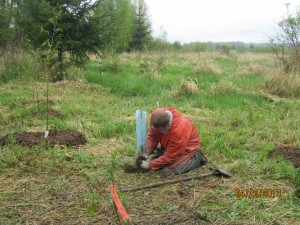
Photo by Monica Brown
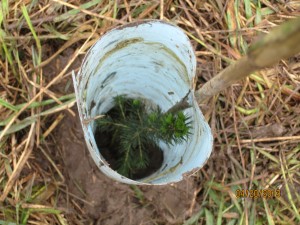
Photo by Monica Brown
The expected outcome of the restoration project is to raise the population of salmon, and migratory birds that inhabit the Qwuloolt Estuary and it’s tributaries. Planting native vegetation is one way of helping to improve water quality. CK Eidem from the AASF informs, “Today we’re putting in about 100 potted stalk and 100 live stakes; potted stalk are potted plants and live stakes are a cutting from a tree which will grow into a shrub if planted at the right time of year,”
Other environmental changes are being made such as improving natural channel formation and eventually removing the tide gate. The tide gate is located just south of the storm water Treatment Facility and should be taken down within a year.
“We’re expecting once they remove the tide gate that there will be a lot more salmon in the creek,” said Walter Rung.
At the estuary project, informational booths and speakers informed people about how to protect the estuary and streams in the area by simple methods of not using toxic chemicals in their yards for weed control, disposing of pet droppings properly and regular maintenance their septic systems. Staff from Tulalip Tribes Natural Resources Department explained the stages and reason of the restoration project and provided delicious samples of Sitka Spruce tea and Nettle Tea.
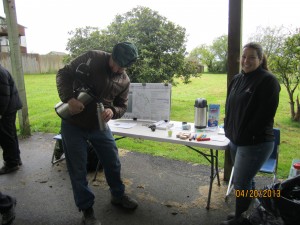
Photo by Monica Brown
This project has been made possible through a large partnership between The Tulalip Tribes, City of Marysville, U.S. Army Corps of Engineers, National Oceanic and Atmospheric Association, Sound Transit, Wash. Dept of Fish and Wildlife, Wash. State Recreation and Conservation Office, Natural Resources Conservation Services, Snohomish Basin Salmon Recovery Forum, Sound Salmon Solutions and U.S. Fish and Wildlife Service.


